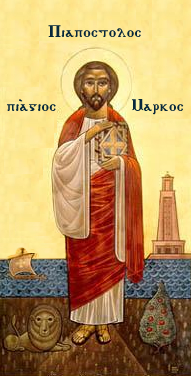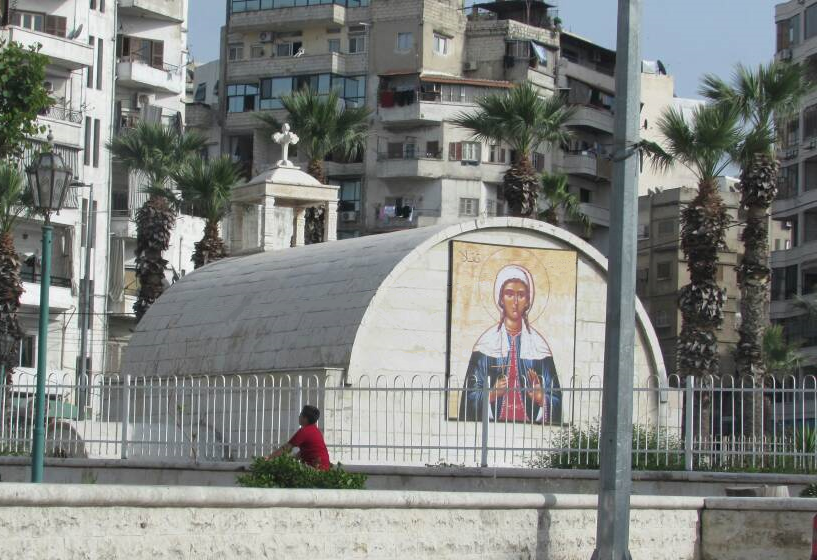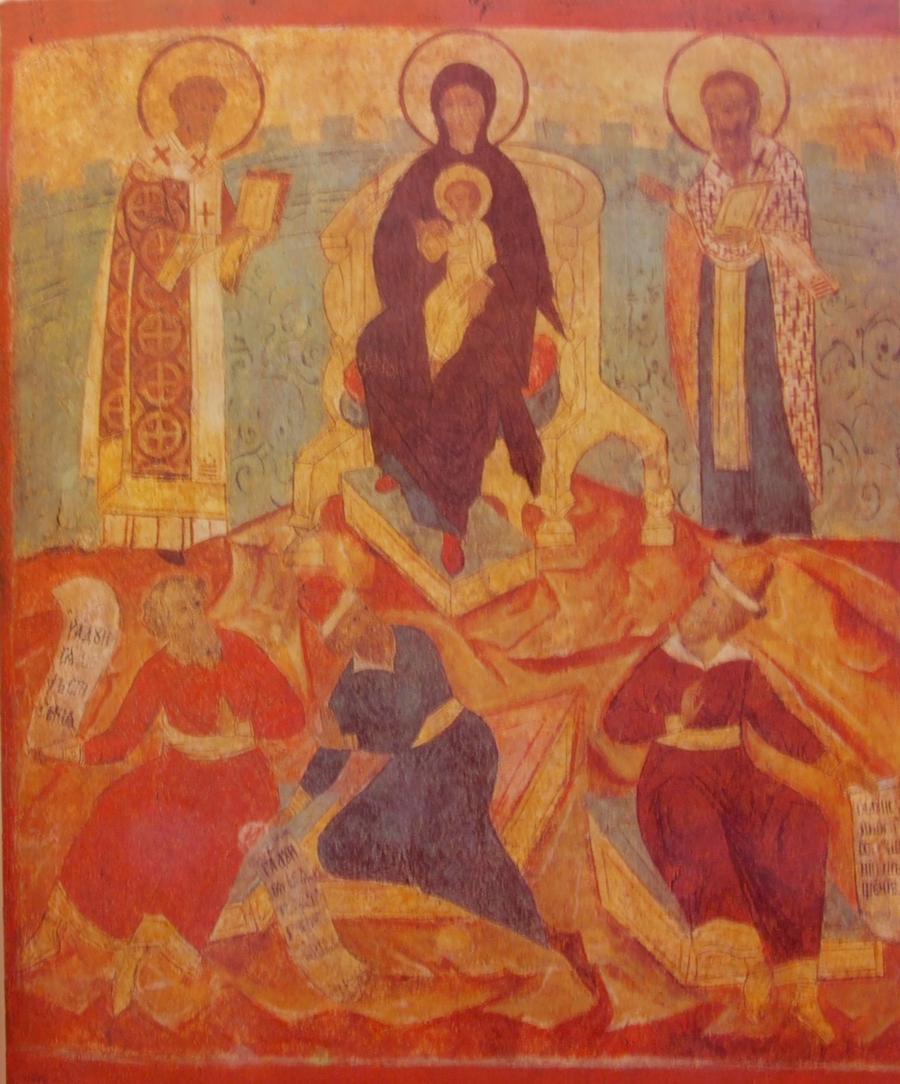|
Basil Of Seleucia
Basil of Seleucia was a Roman Bishop and ecclesiastical writer. He was archbishop of Seleucia ad Calycadnum by 448. He condemned Eutyches in the year 448, "acquiesced" while "rehabilitating" at the Latrocinium in 449, "but recanted and signed" the Tome of Leo in 450. Biography His date of birth is uncertain but probably around the turn of the 5th century; he was consecrated bishop by 448, a position he held for at least a decade. Basil was a notable figure during the period when the Eastern Church was convulsed by the Eutychian controversy, and was necessarily obliged to take sides in all the attendant disputes. Those of his writings which have come down to us, though perhaps too rhetorical and involved, suggest that he was a man of great literary ability. He was appointed Bishop of Seleucia in Isauria, between the years 432 and 447, and was one of those who took part in the Synod of Constantinople, which was summoned in 448 by Patriarch Flavian of Constantinople to assess th ... [...More Info...] [...Related Items...] OR: [Wikipedia] [Google] [Baidu] |
Archbishop
In Christian denominations, an archbishop is a bishop of higher rank or office. In most cases, such as the Catholic Church, there are many archbishops who either have jurisdiction over an ecclesiastical province in addition to their own archdiocese ( with some exceptions), or are otherwise granted a titular archbishopric. In others, such as the Lutheran Church of Sweden, the title is only borne by the leader of the denomination. Etymology The word ''archbishop'' () comes via the Latin . This in turn comes from the Greek , which has as components the etymons -, meaning 'chief', , 'over', and , 'guardian, watcher'. Early history The earliest appearance of neither the title nor the role can be traced. The title of "metropolitan" was apparently well known by the 4th century, when there are references in the canons of the First Council of Nicæa of 325 and Council of Antioch of 341, though the term seems to be used generally for all higher ranks of bishop, including patriarc ... [...More Info...] [...Related Items...] OR: [Wikipedia] [Google] [Baidu] |
Patriarchate Of Alexandria
The Patriarch of Alexandria is the archbishop of Alexandria, Egypt. Historically, this office has included the designation "pope" (etymologically "Father", like "Abbot"). The Alexandrian episcopate was revered as one of the three major episcopal sees (along with Rome and Antioch) before Constantinople and Jerusalem were granted similar status (in 381 and 451, respectively). Alexandria was elevated to ''de facto'' archiepiscopal status by the Councils of Alexandria, and this status was ratified by Canon Six of the First Council of Nicaea, which stipulated that all the Egyptian episcopal provinces were subject to the metropolitan see of Alexandria In the sixth century, these five archbishops were formally granted the title of " patriarch" and were subsequently known as the Pentarchy. Due to several schisms within Christianity, the title of the Patriarch of Alexandria is currently claimed by different churches (two of which are part of the Catholic Church) and held respecti ... [...More Info...] [...Related Items...] OR: [Wikipedia] [Google] [Baidu] |
Life And Miracles Of Saint Thecla
The ''Life and Miracles of Saint Thecla'' () is a Greek hagiography of Thecla, the reputed follower of Paul of Tarsus. The text was composed between 445 and 474. It consists of two books, the first a biography and the second an account of 46 posthumous miracles wrought by Thecla. The ''Life'' is an expansion of the earlier Greek ''Acts of Thecla''. The full ''Life and Miracles'' is about ten times longer than the ''Acts''. The ''Life'' circulated independently of the ''Miracles'', but the ''Miracles'' was always transmitted with the ''Life''. There are a total of twelve manuscripts of the ''Life'', but only four of those include the ''Miracles''. The manuscripts that include the ''Miracles'' are: *Vaticanus gr. 1667 (10th century), which is lacunose *Mosquensis synod 26 (11th century) *Atheniensis 2095 (12th century), which is in the best condition *Vaticanus gr. 1853 (10th century), a palimpsest with only fragments of the ''Life and Miracles'' "The Miracles give some vivid sli ... [...More Info...] [...Related Items...] OR: [Wikipedia] [Google] [Baidu] |
Thecla
Thecla (, ) was a saint of the early Christian Church, and a reported follower of Paul the Apostle. The earliest record of her life comes from the ancient apocryphal '' Acts of Paul and Thecla''. Church tradition The ''Acts of Paul and Thecla'' is a 2nd-century text () which forms part of the ''Acts of Paul'', but was also circulated separately. According to the text, Thecla was a young noble virgin from Iconium who chose to leave her fiancé so she could convert to Christianity and follow Paul. In the text, it is said that Thecla spent three days sitting by her window, listening to Paul speak about the Christian God and the importance of living in chastity. Thecla's mother, Theoclia, and fiancé, Thamyris, became concerned that Thecla was going to follow Paul's teachings. They turned to local authorities to punish Paul for being a Christian and "mak ngvirgins averse to marriage". Paul was sent to prison, where Thecla visited him, kissed his bonds, and refused to leave him and ... [...More Info...] [...Related Items...] OR: [Wikipedia] [Google] [Baidu] |
Photios I Of Constantinople
Photius I of Constantinople (, ''Phōtios''; 815 – 6 February 893), also spelled ''Photius''Fr. Justin Taylor, essay "Canon Law in the Age of the Fathers" (published in Jordan Hite, T.O.R., and Daniel J. Ward, O.S.B., "Readings, Cases, Materials in Canon Law - A Textbook for Ministerial Students, Revised Edition" ollegeville, Minn., The Liturgical Press, 1990, p. 61 (), was the Ecumenical Patriarch of Constantinople from 858 to 867 and from 877 to 886. He is recognized in the Eastern Orthodox Church as Saint Photius the Great. Photius I is widely regarded as the most powerful and influential church leader of Constantinople subsequent to John Chrysostom's archbishopric around the turn of the fifth century. He is also viewed as the most important intellectual of his time – "the leading light of the ninth-century renaissance". He was a central figure in both the conversion of the Slavs to Christianity and the Photian schism, and is considered " e great systematic compiler ... [...More Info...] [...Related Items...] OR: [Wikipedia] [Google] [Baidu] |
Romanos The Melodist
Romanos the Melodist (; late 5th-century – after 555) was a Byzantine hymnographer and composer, who is a central early figure in the history of Byzantine music. Called "the Pindar of rhythmic poetry", he flourished during the sixth century, though the earliest manuscripts of his works are dated centuries after this. He was the foremost Kontakion composer of his time. Life The main biographical source for Romanos is the Menaion for October. Elsewhere, he is only mentioned by Germanus I of Constantinople in the 8th-century, and in the 10th-century Souda (where he is called "Romanos the melodist"). According to the sources, Romanos was born some time in the late 5th-century, in a site in Syria known as Emesa, to a Jewish family. He was baptized as a young boy (though whether or not his parents also converted is uncertain). He moved to Berytus (Beirut) where he was ordained as a deacon in the Church of the Resurrection. Later, he moved to Constantinople, where he died an ... [...More Info...] [...Related Items...] OR: [Wikipedia] [Google] [Baidu] |
Akathist
An Akathist, akaphist or Acathist Hymn (, "unseated hymn") is a type of hymn usually recited by Eastern Orthodox and Byzantine Catholic Christians, dedicated to a saint, holy event, or one of the persons of the Holy Trinity. The name derives from the fact that during the chanting of the hymn, or sometimes the whole service, the congregation is expected to remain standing in reverence, without sitting down (ἀ-, ''a-'', "without, not" and κάθισις, ''káthisis'', "sitting"), except for the aged or infirm. The Akathist is also known by the first three words of its ''prooimion'' (preamble), ''Têi hypermáchōi strategôi'' (Τῇ ὑπερμάχῳ στρατηγῷ, "To you, invincible champion") addressed to Holy Mary (Panagia Theotokos, "The all-holy birth-giver of God"). During Byzantine Catholic and Orthodox Christian religious services in general, sitting, standing, bowing and the making of prostrations are set by an intricate set of rules, as well as individual di ... [...More Info...] [...Related Items...] OR: [Wikipedia] [Google] [Baidu] |
List Of Protomartyrs , the first martyr of the Christian Church.
Saint Thecla the Protomartyr, the first female martyr of the Christian Church, is known as "apostle and protomartyr among women".Michael F. Bird, Scott Harrower, ''The Cambridge Companion to the Apostolic Fathers'', Cambridge University Press (2021), p. 183; see alsA protomartyr (Koine Greek, ''prôtos'' 'first' + ''mártus'' 'martyr') is the first Christian martyr in a country or among a particular group, such as a religious order. Similarly, the phrase the Protomartyr (with no other qualification of country or region) can mean Saint Stephen Stephen (; ) is traditionally venerated as the protomartyr or first martyr of Christianity."St ... [...More Info...] [...Related Items...] OR: [Wikipedia] [Google] [Baidu] |
Patrologia Graeca
The ''Patrologia Graeca'' (''PG'', or ''Patrologiae Cursus Completus, Series Graeca'') is an edited collection of writings by the Church Fathers and various secular writers, in the Greek language. It consists of 161 volumes produced in 1857–1866 by J.P. Migne's Imprimerie Catholique, Paris. Description The ''Patrologia Graeca'' is an edited collection of writings by the Church Fathers and various secular writers, in the Greek language. It consists of 161 volumes produced in 1857–1866 by J. P. Migne's Imprimerie Catholique, Paris. It includes both the Eastern Fathers and those Western authors who wrote before Latin became predominant in the Western Church in the 3rd century, e.g. the early writings collectively known as the Apostolic Fathers, such as the First and Second Epistle of Clement, the Shepherd of Hermas, Eusebius, Origen, and the Cappadocian Fathers Basil the Great, Gregory of Nazianzus, and Gregory of Nyssa. The 161 volumes are bound as 166 (vols. 16 and 8 ... [...More Info...] [...Related Items...] OR: [Wikipedia] [Google] [Baidu] |
Jacques Paul Migne
Jacques Paul Migne (; 25 October 1800 – 24 October 1875) was a French priest who published inexpensive and widely distributed editions of theological works, encyclopedias, and the texts of the Church Fathers, with the goal of providing a universal library for the Catholic priesthood. The ''Patrologia Latina'' and the ''Patrologia Graeca'' (along with the ''Monumenta Germaniae Historica'') are among the great 19th century contributions to the scholarship of patristics and the Middle Ages. Within the Roman Catholic Church, Migne's editions put many original texts for the first time into the hands of the priesthood. Biography Migne was born in Saint-Flour, Cantal, Saint-Flour, Cantal and studied theology at the University of Orléans. He was ordained in 1824 and placed in charge of the parish of Puiseaux, in the diocese of Orléans, where his uncompromisingly Catholic and royalist sympathies did not coincide with local patriotism and the new regime of the Louis-Philippe of F ... [...More Info...] [...Related Items...] OR: [Wikipedia] [Google] [Baidu] |
Antipater Of Bostra
Antipater of Bostra () was a Greek prelate who served as Metropolitan bishop of Bostra in the Roman province of Arabia and was one of the foremost critics of Origen. He lived in the 5th century AD. Biography Little detail is known of Antipater's life. He was born early in the 5th century and was Metropolitan of Bostra by 457, succeeding Constantine who attended the Councils of Ephesus II (449) and Chalcedon (451). Antipater maintained links with Palestinian Monasticism, particularly through Euthymius the Great and his followers. He was a pronounced opponent of Origen, held in high esteem by his contemporaries both civil and ecclesiastical, and was rated among the authoritative ecclesiastical writers by the Fathers of the Seventh General Council (787). There have reached us, in the acts of this council, only a few fragments of his lengthy refutation of the "Apology for Origen" put together (c. 309) by Pamphilus and Eusebius of Caesarea. The work of Antipater was looked on as a m ... [...More Info...] [...Related Items...] OR: [Wikipedia] [Google] [Baidu] |
Mediatrix
Mediatrix is a title given to Mary, mother of Jesus in Catholicism. It refers to the role of the Blessed Virgin Mary as a mediator by intercession in the salvific redemption by her son Jesus Christ, the one proper Mediator by action. Mediatrix is an ancient title that has been used by many saints since at least the 5th century. Its use grew during the Middle Ages and reached its height in the writings of Louis de Montfort and Alphonsus Liguori in the 18th century. A general role of intercession is attributed to Mary in Catholicism, Eastern Orthodoxy, and Oriental Orthodoxy, and the term "Mediatrix" was applied to her in the dogmatic constitution ''Lumen gentium'' of the Second Vatican Council. "This, however, is to be so understood that it neither takes away from nor adds anything to the dignity and efficaciousness of Christ the one Mediator." The use of the title Mediatrix and the doctrine of Mary having a highest level of saintly intercession (called '' hyperdulia''; owi ... [...More Info...] [...Related Items...] OR: [Wikipedia] [Google] [Baidu] |




